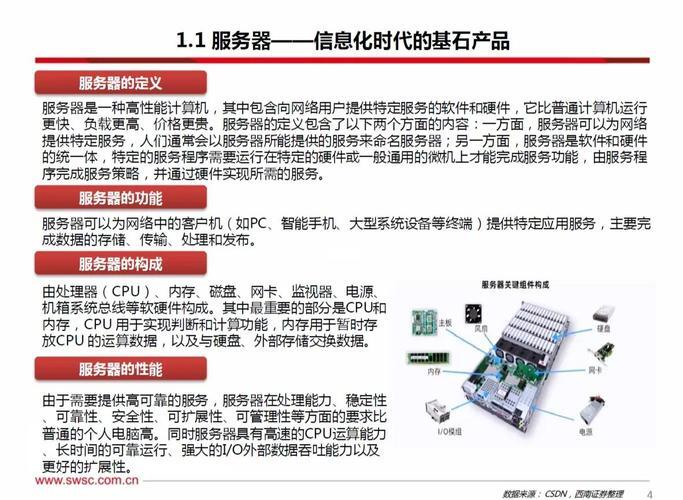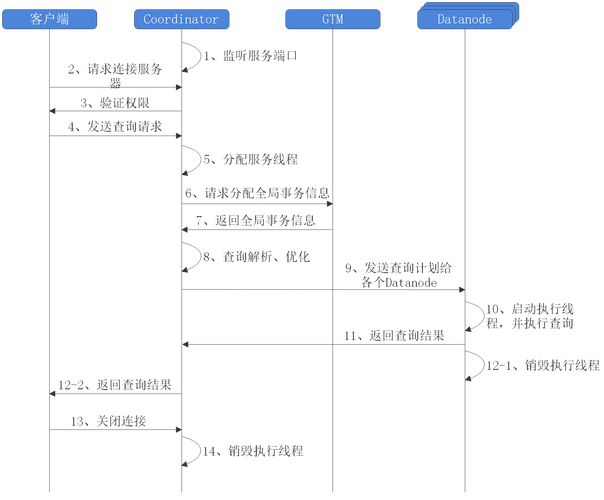安全帽目标检测
安全帽数据集
这里我们使用的安全帽数据集是HelmentDetection,这是一个公开数据集,里面包含5000张voc标注格式的图像,分为三个类别,分别是 0: head 1: helmet 2: person
安全帽数据集下载地址、
我们将数据集下载后,首先需要将其转换为YOLO标注格式:
import os
import xml.etree.ElementTree as ET
import random
import shutil
def collect_classes(voc_annotations_dir):
"""
收集 VOC 数据集中所有出现的类别。
:param voc_annotations_dir: 包含 VOC 格式 XML 文件的目录
:return: 类别名称的集合
"""
classes = set()
# 遍历所有 XML 文件
for xml_file in os.listdir(voc_annotations_dir):
if not xml_file.endswith('.xml'):
continue
# 构造输入文件路径
voc_annotation_path = os.path.join(voc_annotations_dir, xml_file)
# 解析 XML 文件
tree = ET.parse(voc_annotation_path)
root = tree.getroot()
# 遍历每个目标并收集类别
for obj in root.findall('object'):
class_name = obj.find('name').text
classes.add(class_name)
return sorted(classes)
def create_class_mapping(classes):
"""
创建类别名称到索引的映射字典。
:param classes: 类别名称列表
:return: 类别名称到索引的映射字典
"""
return {class_name: idx for idx, class_name in enumerate(classes)}
def convert_voc_to_yolo(voc_annotation_path, yolo_annotation_path, class_mapping):
"""
将单个 VOC 格式的标注文件转换为 YOLO 格式。
:param voc_annotation_path: VOC 格式 XML 文件路径
:param yolo_annotation_path: 输出的 YOLO 格式 TXT 文件路径
:param class_mapping: 类别名称到索引的映射字典
"""
# 解析 XML 文件
tree = ET.parse(voc_annotation_path)
root = tree.getroot()
# 获取图像尺寸
size = root.find('size')
image_width = int(size.find('width').text)
image_height = int(size.find('height').text)
# 存储 YOLO 格式的目标信息
yolo_lines = []
# 遍历每个目标
for obj in root.findall('object'):
# 获取类别名称
class_name = obj.find('name').text
if class_name not in class_mapping:
print(f"类别 '{class_name}' 不在映射中,跳过该目标。")
continue
# 获取类别索引
class_index = class_mapping[class_name]
# 获取边界框坐标
bbox = obj.find('bndbox')
xmin = float(bbox.find('xmin').text)
ymin = float(bbox.find('ymin').text)
xmax = float(bbox.find('xmax').text)
ymax = float(bbox.find('ymax').text)
# 转换为 YOLO 格式的归一化坐标 (x_center, y_center, width, height)
x_center = (xmin + xmax) / 2.0 / image_width
y_center = (ymin + ymax) / 2.0 / image_height
width = (xmax - xmin) / image_width
height = (ymax - ymin) / image_height
# 添加到 YOLO 格式的行
yolo_lines.append(f"{class_index} {x_center:.6f} {y_center:.6f} {width:.6f} {height:.6f}")
# 写入 YOLO 格式的文件
with open(yolo_annotation_path, 'w') as f:
f.write("\n".join(yolo_lines))
def split_dataset(xml_files, train_ratio=0.8, val_ratio=0.2, test_ratio=0.1):
"""
将数据集按照指定比例划分为训练集、验证集和测试集。
:param xml_files: 所有 XML 文件的列表
:param train_ratio: 训练集比例,默认 0.7
:param val_ratio: 验证集比例,默认 0.2
:param test_ratio: 测试集比例,默认 0.1
:return: 划分后的三个集合(训练集、验证集、测试集)
"""
random.shuffle(xml_files) # 随机打乱文件顺序
total_count = len(xml_files)
# 计算各部分的分割点
train_end = int(total_count * train_ratio)
val_end = train_end + int(total_count * val_ratio)
# 划分数据集
train_set = xml_files[:train_end]
val_set = xml_files[train_end:val_end]
test_set = xml_files[val_end:]
return train_set, val_set, test_set
def organize_files(voc_images_dir, voc_annotations_dir, output_dir, train_set, val_set, test_set):
"""
将图片和标注文件按照划分结果组织到对应的文件夹中。
:param voc_images_dir: 包含原始图片的目录
:param voc_annotations_dir: 包含原始标注文件的目录
:param output_dir: 输出目录
:param train_set: 训练集文件名列表
:param val_set: 验证集文件名列表
:param test_set: 测试集文件名列表
"""
# 创建输出目录结构
images_dir = os.path.join(output_dir, "images")
labels_dir = os.path.join(output_dir, "labels")
os.makedirs(os.path.join(images_dir, "train"), exist_ok=True)
os.makedirs(os.path.join(images_dir, "val"), exist_ok=True)
os.makedirs(os.path.join(images_dir, "test"), exist_ok=True)
os.makedirs(os.path.join(labels_dir, "train"), exist_ok=True)
os.makedirs(os.path.join(labels_dir, "val"), exist_ok=True)
os.makedirs(os.path.join(labels_dir, "test"), exist_ok=True)
def copy_files(file_list, subset):
"""
复制文件到对应的子集目录中。
"""
for file_name in file_list:
base_name = os.path.splitext(file_name)[0]
# 复制图片
src_image_path = os.path.join(voc_images_dir, base_name + ".png")
dst_image_path = os.path.join(images_dir, subset, base_name + ".png")
if os.path.exists(src_image_path):
shutil.copy(src_image_path, dst_image_path)
else:
print(f"警告:未找到图片文件 {src_image_path}")
# 复制标注文件
src_label_path = os.path.join(voc_annotations_dir, base_name + ".txt")
dst_label_path = os.path.join(labels_dir, subset, base_name + ".txt")
if os.path.exists(src_label_path):
shutil.copy(src_label_path, dst_label_path)
else:
print(f"警告:未找到标注文件 {src_label_path}")
# 复制训练集、验证集和测试集
copy_files(train_set, "train")
copy_files(val_set, "val")
copy_files(test_set, "test")
print("图片和标注文件已成功组织到对应的文件夹中!")
def batch_convert_voc_to_yolo(voc_images_dir, voc_annotations_dir, output_dir):
"""
批量将 VOC 格式的标注文件转换为 YOLO 格式,并划分数据集。
:param voc_images_dir: 包含原始图片的目录
:param voc_annotations_dir: 包含 VOC 格式 XML 文件的目录
:param output_dir: 输出目录
"""
# 收集所有类别
classes = collect_classes(voc_annotations_dir)
class_mapping = create_class_mapping(classes)
print("发现以下类别:", classes)
# 获取所有 XML 文件
xml_files = [f for f in os.listdir(voc_annotations_dir) if f.endswith('.xml')]
# 划分数据集
train_set, val_set, test_set = split_dataset(xml_files)
print(f"训练集数量:{len(train_set)},验证集数量:{len(val_set)},测试集数量:{len(test_set)}")
# 创建临时标注输出目录
temp_labels_dir = os.path.join(output_dir, "temp_labels")
os.makedirs(temp_labels_dir, exist_ok=True)
# 转换所有标注文件为 YOLO 格式
for xml_file in xml_files:
# 构造输入和输出文件路径
voc_annotation_path = os.path.join(voc_annotations_dir, xml_file)
yolo_annotation_path = os.path.join(temp_labels_dir, os.path.splitext(xml_file)[0] + ".txt")
# 转换单个文件
convert_voc_to_yolo(voc_annotation_path, yolo_annotation_path, class_mapping)
# 组织文件到对应的文件夹中
organize_files(voc_images_dir, temp_labels_dir, output_dir, train_set, val_set, test_set)
# 删除临时标注目录
shutil.rmtree(temp_labels_dir)
print("数据集转换与组织完成!")
# 示例用法
if __name__ == "__main__":
# 输入和输出目录
voc_images_dir = "D:/project_mine/detection/datasets/HelmetDetection/train/JPEGImages"
voc_annotations_dir = "D:/project_mine/detection/datasets/HelmetDetection/train/Annotations"
output_dir = "D:/project_mine/detection/datasets/anquanmao"
# 批量转换与划分
batch_convert_voc_to_yolo(voc_images_dir, voc_annotations_dir, output_dir)
模型训练
模型训练很简单,我们只需要修改一下数据集配置文件即可
path: ../datasets/anquanmao # dataset root dir train: images/train # train images (relative to 'path') 4 images val: images/val # val images (relative to 'path') 4 images test: # test images (optional) # Classes names: 0: head 1: helmet 2: person
随后,即可开启模型训练
from ultralytics import YOLO
model=YOLO("yolo11.yaml")#.load("yolo11n.pt")#.load("yolo11s.pt") # build from YAML and transfer weights
# Train the model
results = model.train(data="anquanmao.yaml",
epochs=60,
batch=16, # 根据GPU显存调整(T4建议batch=8)
imgsz=640,
device="0", # 指定GPU ID
optimizer="AdamW",
lr0=1e-4,
warmup_epochs=4,
label_smoothing=0.1,
amp=True)
结果如下:
这里的mAP值不高是因为,人这个类别似乎缺失了,导致人这个类别的AP值为0,单独来看,头和安全帽的AP值均在0.5以上。
ONNX模型推理
为使其能够具有更好的扩展性,我们将原本的pt模型文件转换为ONNX格式,随后进行推理,代码如下:
import time
import cv2
import numpy as np
import onnxruntime
#from my_utils.detect.utils import detections_dog
from utils import xywh2xyxy, multiclass_nms
class SafeHat:
#初始化YOLO模型
def __init__(self, path, conf_thres=0.7, iou_thres=0.5):
self.conf_threshold = conf_thres
self.iou_threshold = iou_thres
# Initialize model
self.initialize_model(path)
#调用推理
def __call__(self, image):
return self.detect_objects(image)
#加载模型并获取模型的输入与输出结构
def initialize_model(self, path):
self.session = onnxruntime.InferenceSession(path,providers=onnxruntime.get_available_providers())
self.get_input_details()
self.get_output_details()
#执行模型推理过程
def detect_objects(self, image):
input_tensor = self.prepare_input(image)
# Perform inference on the image
outputs = self.inference(input_tensor)
self.boxes, self.scores, self.class_ids = self.process_output(outputs)
return self.boxes, self.scores, self.class_ids
#前处理操作
def prepare_input(self, image):
self.img_height, self.img_width = image.shape[:2]
input_img = cv2.cvtColor(image, cv2.COLOR_BGR2RGB)
# Resize input image
input_img = cv2.resize(input_img, (self.input_width, self.input_height))
# Scale input pixel values to 0 to 1
input_img = input_img / 255.0
input_img = input_img.transpose(2, 0, 1)
input_tensor = input_img[np.newaxis, :, :, :].astype(np.float32)
return input_tensor
#具体使用onnx推理
def inference(self, input_tensor):
outputs = self.session.run(self.output_names, {self.input_names[0]: input_tensor})
return outputs
#后处理操作
def process_output(self, output):
predictions = np.squeeze(output[0]).T
# Filter out object confidence scores below threshold
scores = np.max(predictions[:, 4:], axis=1)
predictions = predictions[scores > self.conf_threshold, :]
scores = scores[scores > self.conf_threshold]
if len(scores) == 0:
return [], [], []
# Get the class with the highest confidence
class_ids = np.argmax(predictions[:, 4:], axis=1)
# Get bounding boxes for each object
boxes = self.extract_boxes(predictions)
indices = multiclass_nms(boxes, scores, class_ids, self.iou_threshold)
return boxes[indices], scores[indices], class_ids[indices]
#box转换,包含尺度变换与xywh转换
def extract_boxes(self, predictions):
# Extract boxes from predictions
boxes = predictions[:, :4]
boxes = self.rescale_boxes(boxes)
boxes = xywh2xyxy(boxes)
return boxes
#尺度变换
def rescale_boxes(self, boxes):
# Rescale boxes to original image dimensions
input_shape = np.array([self.input_width, self.input_height, self.input_width, self.input_height])
boxes = np.divide(boxes, input_shape, dtype=np.float32)
boxes *= np.array([self.img_width, self.img_height, self.img_width, self.img_height])
return boxes
def get_input_details(self):
model_inputs = self.session.get_inputs()
self.input_names = [model_inputs[i].name for i in range(len(model_inputs))]
self.input_shape = model_inputs[0].shape
self.input_height = self.input_shape[2]
self.input_width = self.input_shape[3]
def get_output_details(self):
model_outputs = self.session.get_outputs()
self.output_names = [model_outputs[i].name for i in range(len(model_outputs))]
# def draw_detections(self, image, draw_scores=True, mask_alpha=0.4):
#
# return detections_dog(image, self.boxes, self.scores,
# self.class_ids, mask_alpha)
#
#
# if __name__ == "__main__":
# model_path = "anquanmao.onnx" # 替换为你的 TFLite 模型路径
# image_path = "down_head.png" # 替换为你的测试图像路径
#
# # 初始化模型
# detector = YOLODet(model_path)
#
# # 加载图像
# image = cv2.imread(image_path)
#
# # 检测对象
# boxes, scores, class_ids = detector(image)
#
# # 绘制检测结果
# result_image = detector.draw_detections(image)
#
# # 显示结果
# cv2.imshow("Detections", result_image)
# cv2.waitKey(0)
# cv2.destroyAllWindows()
免责声明:我们致力于保护作者版权,注重分享,被刊用文章因无法核实真实出处,未能及时与作者取得联系,或有版权异议的,请联系管理员,我们会立即处理! 部分文章是来自自研大数据AI进行生成,内容摘自(百度百科,百度知道,头条百科,中国民法典,刑法,牛津词典,新华词典,汉语词典,国家院校,科普平台)等数据,内容仅供学习参考,不准确地方联系删除处理! 图片声明:本站部分配图来自人工智能系统AI生成,觅知网授权图片,PxHere摄影无版权图库和百度,360,搜狗等多加搜索引擎自动关键词搜索配图,如有侵权的图片,请第一时间联系我们。









